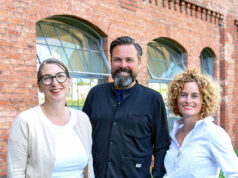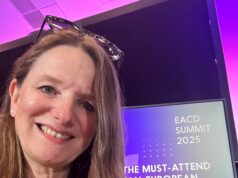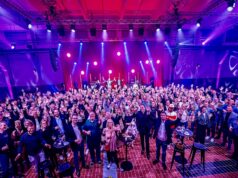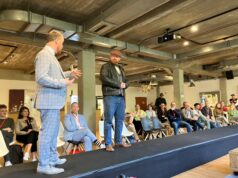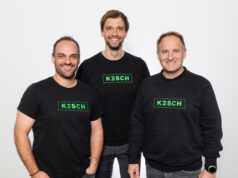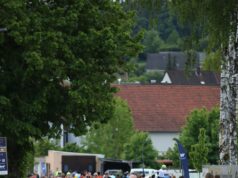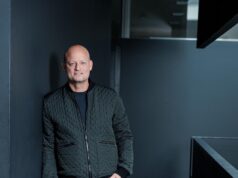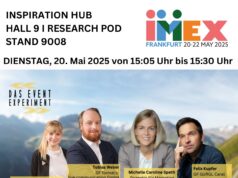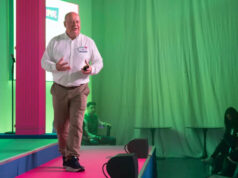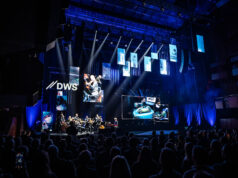 Digital Revolution
Digital Revolution
1. System Compatibility and Integration
A platform should have a technological system design that is as open as possible so that corresponding tools, such as registration systems, communication tools, conference tools, etc., can be seamlessly integrated. On the one hand, this pays off in terms of flexibility and multi-functionality, how strategically and creatively I can use a platform in the concept process, and on the other hand, it ensures that I can recommend myself in a multitude of RFPs, pitches and inquiries, as company-internal system specifications are often cited as an exclusion criterion here. Furthermore, in the sense of an innovative development approach, it is essential that market innovations in the sphere of interactive tools as well as applications in the field of gamification can be adapted as directly as possible. This is the only way to stay up to date and in the forefront of the industry.
• Key question: Does the platform connect to a wide range of tools for interaction and engagement, as well as to my favorite registration systems and conferencing tools?
2. Usability and Intuition
If you have to think too much when navigating within a system, emotions cannot really develop and emerge. Ergo – intuitive usability is an absolute must have and UX comes before UI. Event participants follow a behavior learned over years or even decades, which is linked to a clear expectation: at which point of my event journey will I receive which information, at which point can I communicate with whom and so on. This automatic expectation exists regardless of whether an event is live, virtual or hybrid. Everything has to flow smoothly and seamlessly so that the dramaturgical plot can unfold and communication goals can be achieved.
• Key question: Is the navigation through the platform self-explanatory enough and are the normal routines of my target group addressed?
3. Branding
The most beautiful platform interface does not work if it cannot be adapted to a specific corporate design. This applies to both the classic incorporation of all branding elements and the adaptation of the architecture and its color scheme. In addition, it is important that the virtual interior and the avatars can be designed to conform to the style guide. Furthermore, the feasibility of related special disciplines such as acoustic branding is advantageous in order to be able to create a genuine brand experience in the fully or partially virtual space. So that time and budget required for the respective digital „conversion work“ between individual events does not get out of hand, the brand-compatible operation of the user interface should be tested beforehand.
• Key question: Does the backend of your platform provide a DIY function, as is common with current content management systems?
4. Safety first
• Key question: Can you send us your data protection guideline and the location of your servers where all event related data is saved?
5. Content Convergence
Just because an event transpires in a digital context should not mean that I have to compromise my choice of content, my channels and the staging orchestration. Moreover, the virtual world allows for variations of the different content worlds to be presented in parallel and combined in a way that significantly boosts the impact of my messages (for example, augmented reality and chat, polls and gamification, matching apps and live streams). However, since most digital platforms were developed from a primarily technological perspective, there is often a lack of understanding of the dramaturgical demands of creative and strategic agencies and consultants. Therefore, the provider’s experience in this area should be reviewed.
• Key question: How would you describe the creative USP of your system and how do you deal with didactic issues like edutainment?
6. Strategic Multichannel Communication
Fortunately, the days when event marketing led a satellite existence and you could retreat into your own silo are over. Especially after becoming digital or partially digital, there is no longer any need to hide from the empirically measurable communication disciplines such as online, mobile or TV marketing. As a consequence, corporate marketing decision-makers have identified the event as a new integral component and are taking advantage of it. Where an event was once a marginal component, it is now only a click away and thus has been given a strategic upgrade, which in consequence, and in terms of conceptual possibilities, allows for a multitude of new application possibilities and business models. On one hand, this requires agency’s personnel to gain a new skillset, but above all, it requires that the platform of choice allows and supports the aforementioned integrability. Ideally, an event platform can become an inherent component of a company’s digital ecosystem and form part of the performance engine based on clearly defined KPIs.
• Key question: How would you describe your platform in its role as an integral tool of strategic brand communication?
7. Personalization
A digital event offers one huge disadvantage: it’s digital, and that goes against the very essence of an event. A live event has a direct impact. You can respond appropriately to wishes, needs, and individual preferences. This creates closeness and emotion. Cyberspace and digital communication are on an entirely different plane: here, the aim is to convey messages and information to as large an audience as possible, without being able to make individual modifications. The focus is therefore on visibility and reach. So how can I combine these two contrasting USPs? Artificial intelligence, based on data-driven target group analysis, can combine the best of both worlds. My audience is classified according to their wishes, interests, media usage character, etc., and the design of the platform, the choice of content, and the user journey are matched to the respective category, so that personalized scenarios can be created that correspond to the individual preferences of my participants. If you go one step further and drive this approach with self-learning algorithms, you can have a fully customized event approach, where each individual has his or her own unique experience.
• Key question: Is your platform data-driven and does it have an AI Interface?
8. Pricing and Resiliency
This should be basic knowledge, but for the sake of completeness I would like to mention it anyway. A platform should offer system-specific performance so that any number of virtual participants, no matter how many, will not hinder or restrict the platform when used live. Pricing should be modular enough to allow me to operate in the most budget-friendly way in both project and campaign mode. Furthermore, it should offer fitting pricing models for different formats.
• Key question: How many participants have you had on your platform at the same time? How do you deal with single and continuous jobs in terms of cost calculation?
Despite all digitalization, innovation and technological enthusiasm: It’s all about experience and emotions. And it will stay that way.
Patric Weiler is Commercial Director at Magnid and Executive Advisor at Proske. He has been involved in digital transformation and the integration of innovative technologies and virtual layers within strategic live communication since 2002. Weiler shares his knowledge as a university lecturer and keynote speaker at various international event and congress formats.
Caption: Patric Weiler (Photo: Thomas Wieland)
Magnid GmbH
Magnid GmbH was founded in 2020 as a specialized provider of the virtual venue platform magnid. The company is managed by Christian Holtz and Markus Struppler. The headquarters are in Munich, with additional offices in Rosenheim and New York. The virtual venue platform magnid is suitable for all virtual event formats – regardless of whether it is a meeting, a conference, a presentation or a convention. The selected virtual environment can be customized by the user, integrating all content and functionalities. magnid is cloud-based and AI-supported. For the integration into the company’s own networks and a smooth data exchange, magnid is equipped with appropriate interfaces. magnid is available as SaaS.
Magnid GmbH
Dreifaltigkeitsplatz 1A
D-80331 Munich
Contact: Patric Weiler
Telephone: +49 89 54 47 94 81 52
E-Mail: patric.weiler@magnid.com
Web: www.magnid.com
{phocagallery view=category|categoryid=232|imageid=4308}


